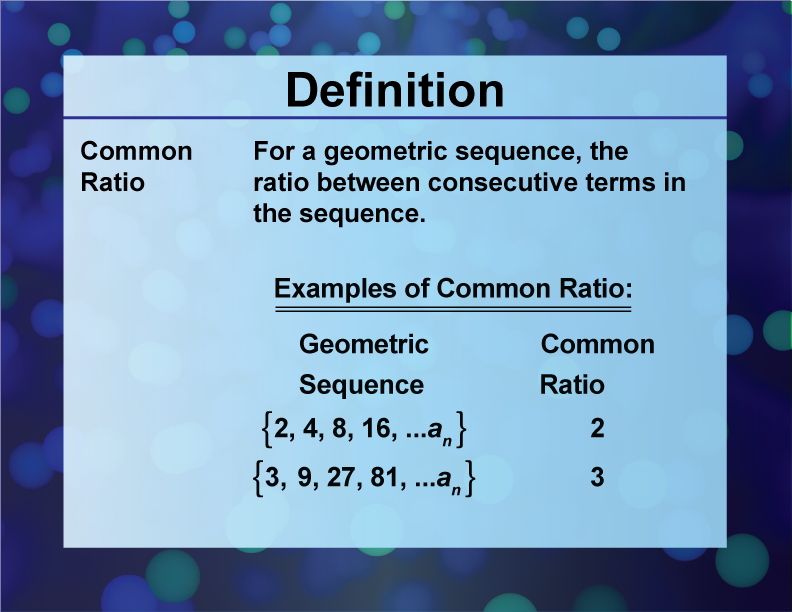
Display Title
Definition--Sequences and Series Concepts--Common Ratio
Display Title
Common Ratio

Topic
Sequences and Series
Definition
The common ratio is the ratio between consecutive terms in a geometric sequence.
Description
The common ratio is a fundamental concept in geometric sequences, representing the consistent factor by which each term is multiplied to obtain the next term. This concept is crucial in understanding exponential growth and decay, which are prevalent in various mathematical and scientific applications.
In real-world applications, the common ratio is used in financial calculations, such as determining the growth of investments or the depreciation of assets. It is also used in population studies and radioactive decay. Algebraically, if an is the nth term of a geometric sequence and r is the common ratio, then
an = a1 ⋅ r(n − 1)
Understanding the common ratio is essential for math education as it helps students recognize and analyze exponential patterns. It lays the groundwork for more complex topics in algebra and calculus, and aids in developing problem-solving skills.
For a complete collection of terms related to sequences and series click on this link: Sequences and Series Collection
| Common Core Standards | CCSS.MATH.CONTENT.6.SP.B.4, CCSS.MATH.CONTENT.HSF.IF.A.3, CCSS.MATH.CONTENT.HSF.BF.A.2, CCSS.Math.CONTENT.HSF.LE.A.2 |
|---|---|
| Grade Range | 6 - 9 |
| Curriculum Nodes |
Algebra • Sequences and Series • Sequences |
| Copyright Year | 2021 |
| Keywords | data analysis, arithmetic sequence, common difference, definitions, glossary terms, geometric sequence, common ratio |